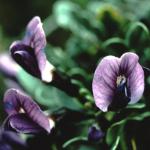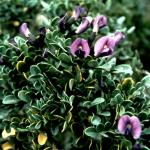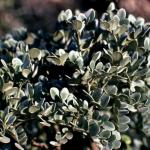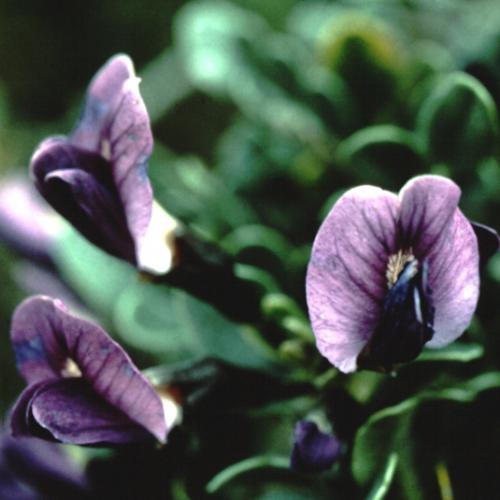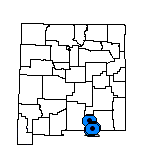Dermatophyllum guadalupense (Guadalupe Mescalbean)
| USFWS | State of NM | USFS | BLM | Navajo Nation | State Rank | Global Rank | R-E-D Code | NMRPTC Status | Strategy Status |
|---|---|---|---|---|---|---|---|---|---|
| SEN | SEN | S1 | G2 | 3-1-2 | R | SS |
| Overall Conservation Status | Documented Threats | Actions Needed |
|---|---|---|
| WEAKLY CONSERVED | Caterpillar herbivory (Uresiphita reversalis). |
Avoid direct future oil or gas development impacts, survey for distribution and threats, fire management, designation of proposed Brokeoff Mtn/Guadalupe Rim ACEC |
*New Mexico Native Plants Protection Advisory Committee. 1984. A handbook of rare and endemic plants of New Mexico. University of New Mexico Press, Albuquerque.
Northington, D.K. 1976. Evidence bearing on the origin of infraspecific disjunction in Sophora gypsophila. Plant Systematics and Evolution 125:233-244.
Sivinski, R.C. 1991. Status report on Sophora gypsophila var. guadalupensis. For U.S. Fish and Wildlife Service, New Mexico Ecological Services Field Office, Albuquerque.
Turner, B.L. and A.M. Powell. 1972. A new gypsophilic Sophora from north-central Mexico and adjacent Texas. Phytologia 22:419-423.
Turner, B.L. 2012. New names in Dermatophyllum. Phytoneuron 2012-3:1-4.
Gandhi, K.N., M.A. Vincent and L.J. Reveal. 2011. Dermatophyllum, the correct name for Calia (Fabaceae). Phytoneuron 2011-57:1-4.
For distribution maps and more information, visit Natural Heritage New Mexico

